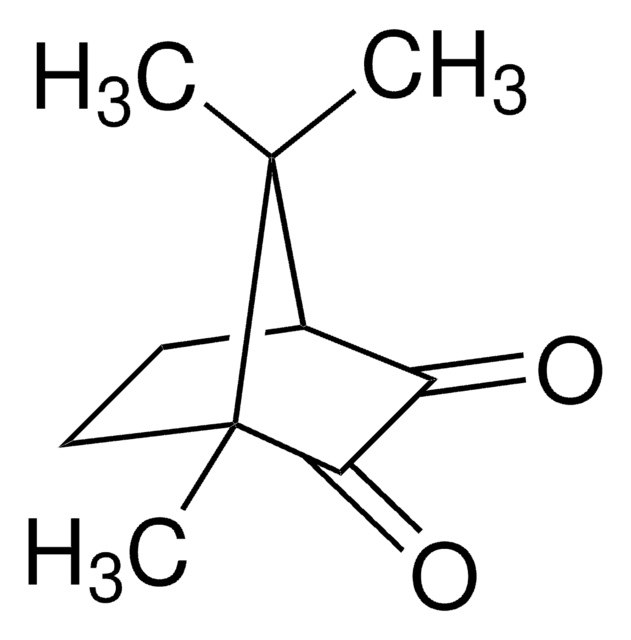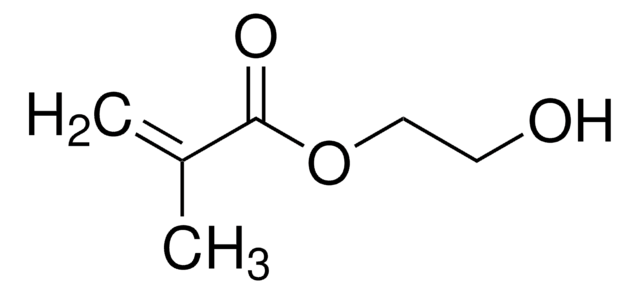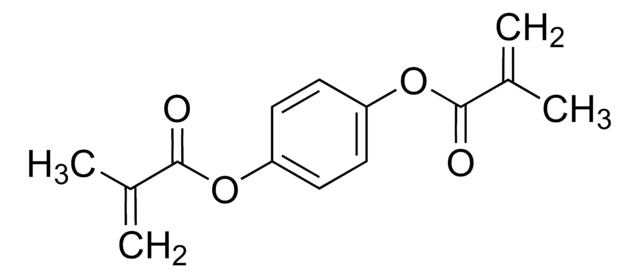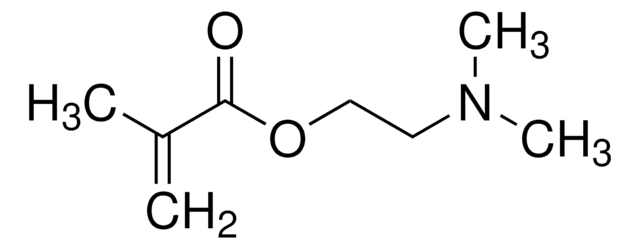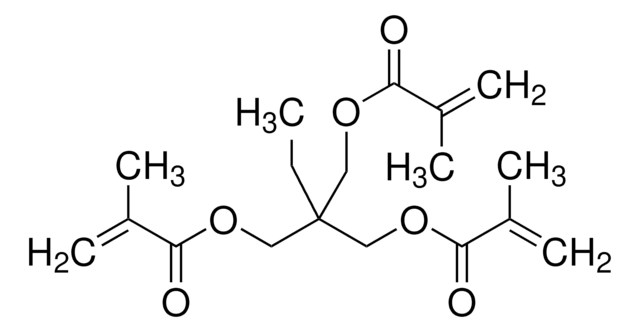494356
Bisphenol A glycerolate dimethacrylate
glycerol/phenol 1
Sinónimos:
2,2′-Bis[4-(3-methacryloxy-2-hydroxypropoxy)phenyl]propane, 2,2′-Bis[4-(3-methacryloyloxy-2-hydroxypropoxy)phenyl]propane, 2,2-Bis[p -(3-methacryloxy-2-hydroxypropoxy)phenyl]propane, 2,2-Bis[p -[2-hydroxy-3-(methacryloxy)propoxy]phenyl]propane, Bisphenol A bis(2-hydroxy-3-methacryloxypropyl) ether
About This Item
Productos recomendados
composición
glycerol/phenol, 1
Nivel de calidad
índice de refracción
n20/D 1.552 (lit.)
densidad
1.161 g/mL at 25 °C (lit.)
temp. de almacenamiento
2-8°C
cadena SMILES
CC(=C)C(=O)OCC(O)COc1ccc(cc1)C(C)(C)c2ccc(OCC(O)COC(=O)C(C)=C)cc2
InChI
1S/C29H36O8/c1-19(2)27(32)36-17-23(30)15-34-25-11-7-21(8-12-25)29(5,6)22-9-13-26(14-10-22)35-16-24(31)18-37-28(33)20(3)4/h7-14,23-24,30-31H,1,3,15-18H2,2,4-6H3
Clave InChI
AMFGWXWBFGVCKG-UHFFFAOYSA-N
Descripción general
- Phenyl ring provides chemical resistance
- Ether linkage allows flexibility
- Hydroxyl group gives good adhesion
- Methacrylate is the reactive site for crosslinking
Aplicación
- As a crosslinking monomer in the preparation of zwitter ionic monolithic columns for liquid chromatography.
- In the preparation of an antibacterial dental adhesive.
Palabra de señalización
Danger
Frases de peligro
Consejos de prudencia
Clasificaciones de peligro
Aquatic Chronic 3 - Eye Dam. 1 - Skin Sens. 1
Código de clase de almacenamiento
10 - Combustible liquids
Clase de riesgo para el agua (WGK)
WGK 2
Punto de inflamabilidad (°F)
230.0 °F
Punto de inflamabilidad (°C)
110 °C
Elija entre una de las versiones más recientes:
¿Ya tiene este producto?
Encuentre la documentación para los productos que ha comprado recientemente en la Biblioteca de documentos.
Los clientes también vieron
Artículos
The Progress in Development of Dental Restorative Materials
Nuestro equipo de científicos tiene experiencia en todas las áreas de investigación: Ciencias de la vida, Ciencia de los materiales, Síntesis química, Cromatografía, Analítica y muchas otras.
Póngase en contacto con el Servicio técnico


